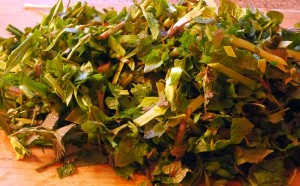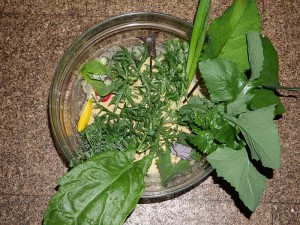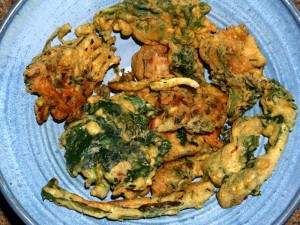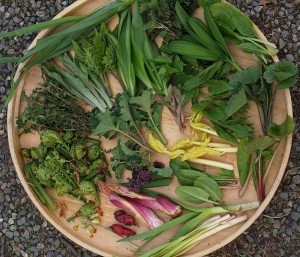Sorrel (Rumex acetosa) is found throughout Europe, even in alpine habitats up to 2,100m in the Alps and 1,900m in Norway. It ranges eastwards as far as Japan and is also found in the Himalayas and mountains of China. It has also naturalised in North America,
New Zealand and Australia. Throughout its range, its a prized wild edible and in France and Russia it is also cultivated for the markets and a number of varieties have been developed. There are also a number of varieties that never flower, giving us fresh leaves throughout the season. This species is fully covered in my book Around the World in 80 plants. A few years ago, I bought 7 varieties of sorrel from a vegetable catalogue in Estonia and planted an area of the garden to these. Last year, I removed all the flowers except one variety and offered seed through KVANN (Norwegian Seed Savers). This year, I let them all flower and will offer a mix of all varieties, now drying in the garden.
If you know Russian, please tell me what the names mean (see the picture from a powerpoint presentation)…at least two are the same!

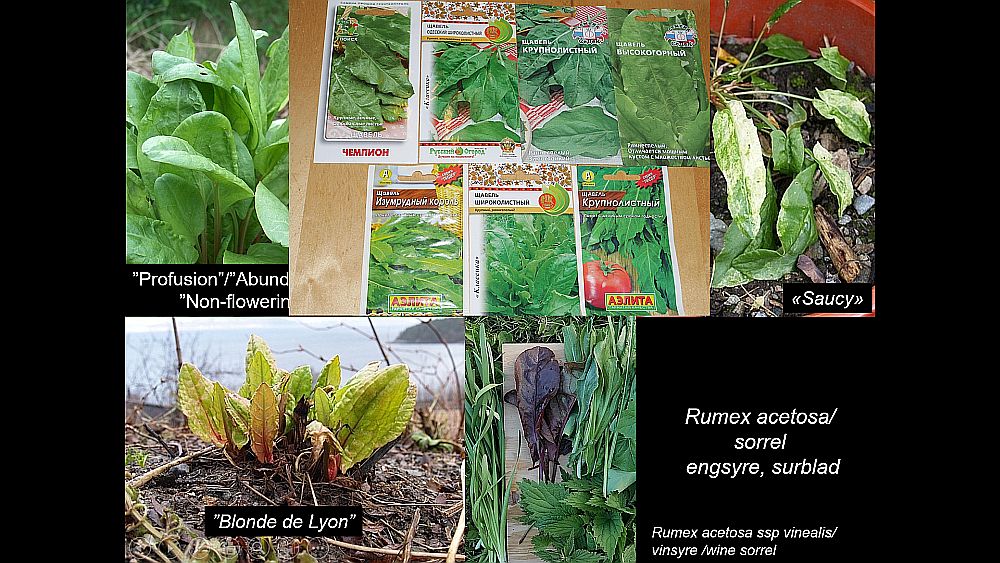
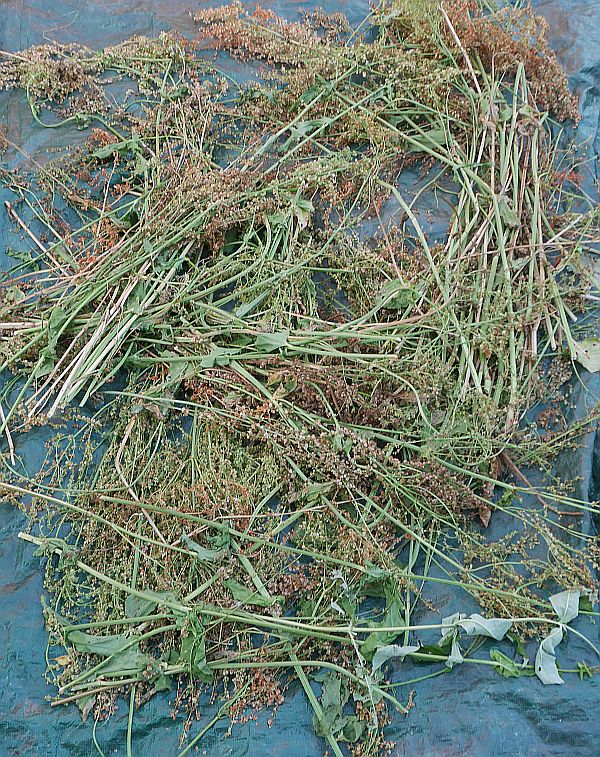

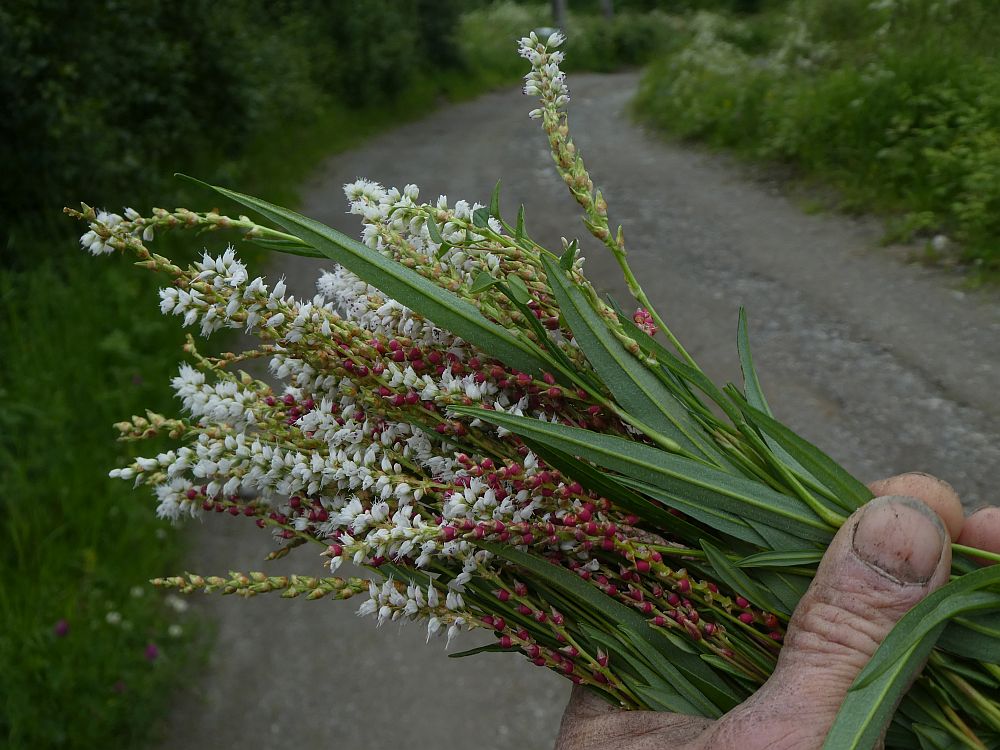


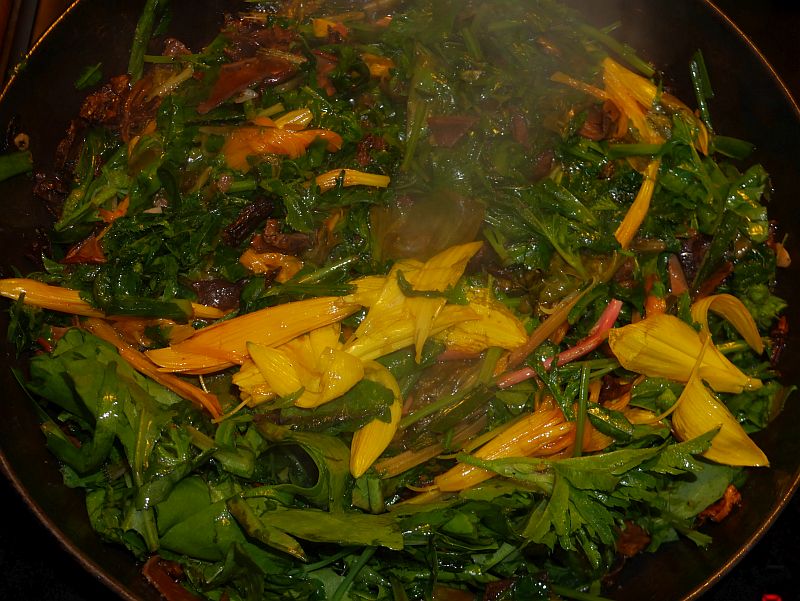
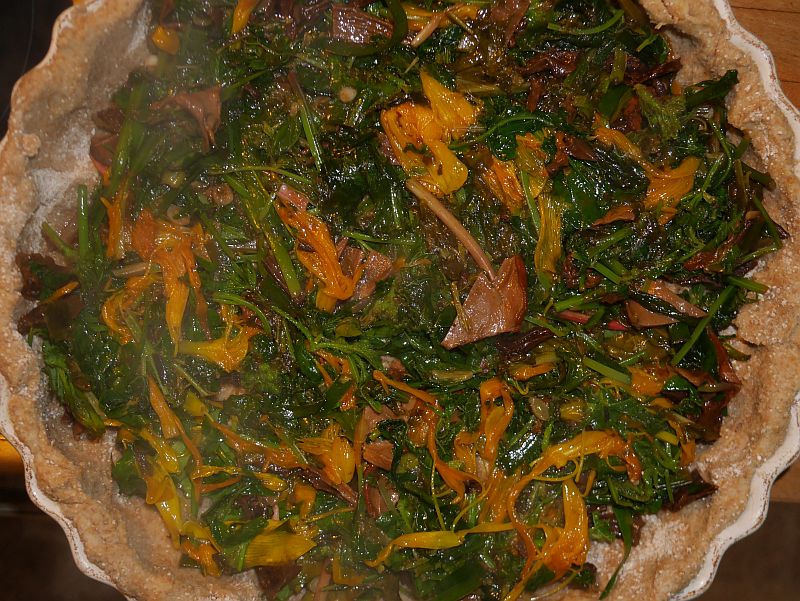

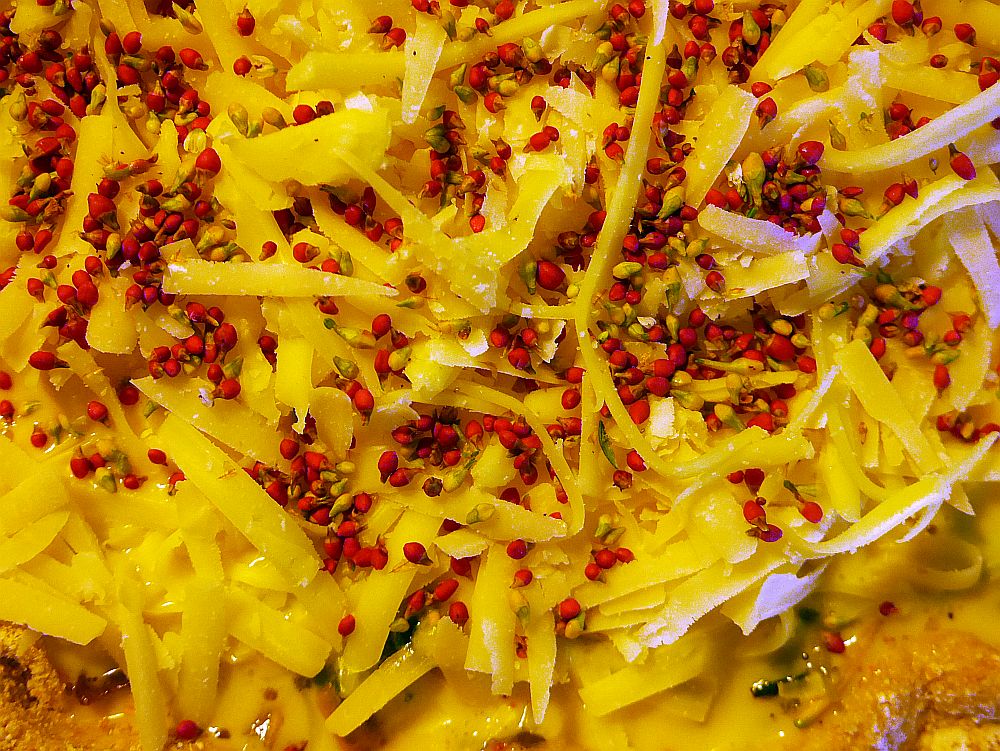
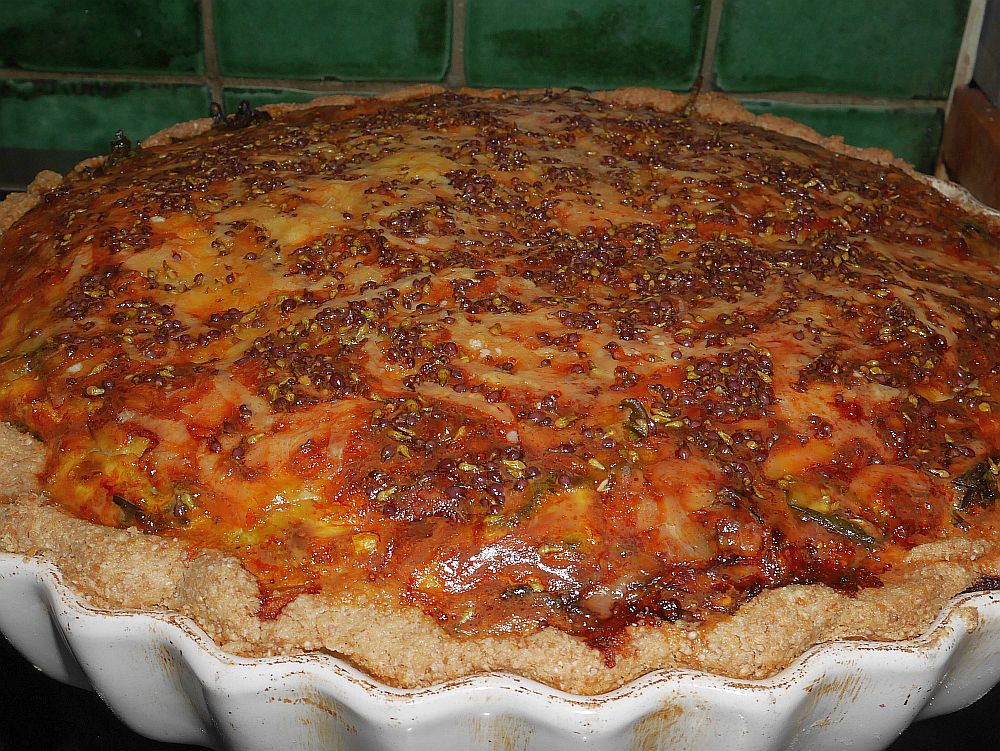


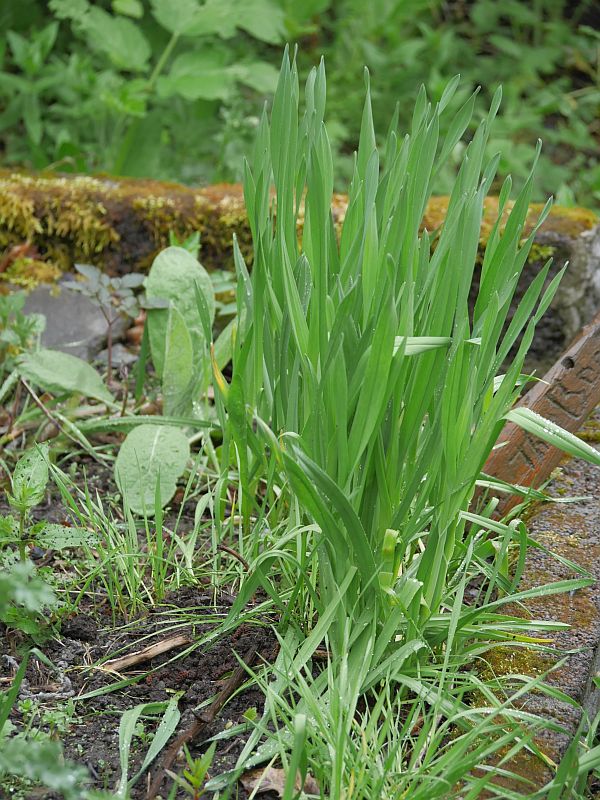
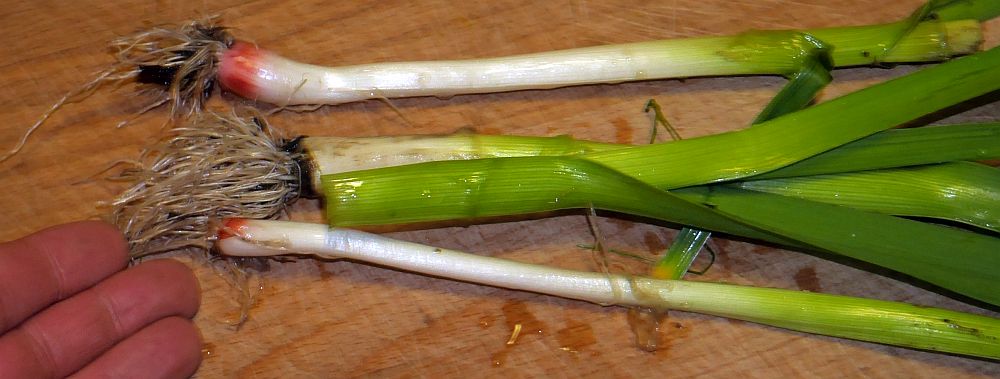
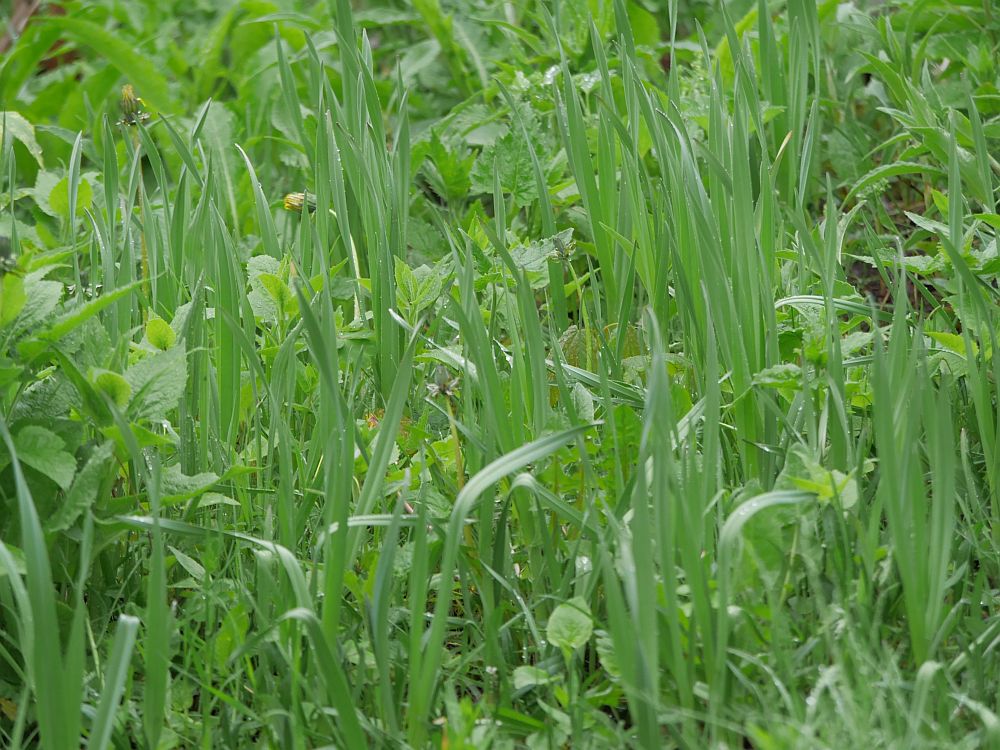
 Sorrel (Rumex acetosa) flowering stems
Sorrel (Rumex acetosa) flowering stems